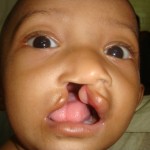
This aim of this review was to identify if patients individuals born with non-syndromic oral clefts had a higher frequency of dental anomalies.
Searches were conducted in Medline, BIREME, OVID all EBM Reviews, and the Cochrane Library. Papers reporting observational controlled studies of non-syndromic forms of oral clefts matched for dental anomalies in primary and/or permanent teeth were included without language restriction.
The methodological quality of the papers was assessed and scored. Eligible studies were scored as ‘A’- low risk of bias, ‘B’ – moderate risk of bias, or ‘C’ – high risk of bias and poor quality. Meta-analysis was conducted using fixed and random effects models.
Six studies, mostly of low to moderate quality met the selection criteria and were included in the meta-analysis.
Using a random effects model they found:
- A significant association between tooth agenesis and oral clefts (OR=12.31, 95%CI 3.75-40.36).
And using a fixed effects model:
- A positive association between supernumerary and oral clefts (OR=4.99, 95%CI 2.58-9.64).
- A positive association between crown morphological abnormalities oral clefts(OR=5.69,95%CI 3.96-8.19).
The reviewers concluded:
Although general limitations in study design were observed, the evidence suggests there is a higher number of dental anomalies in the permanent dentition in individuals born with oral clefts.
Tannure PN, Oliveira CA, Maia LC, Vieira AR, Granjeiro JM, Costa MC. Prevalence of dental anomalies in non-syndromic individuals with cleft lip and palate: a systematic review and meta-analysis. Cleft Palate Craniofac J. 2011 Jul 8. [Epub ahead of print] PubMed PMID:21740173
